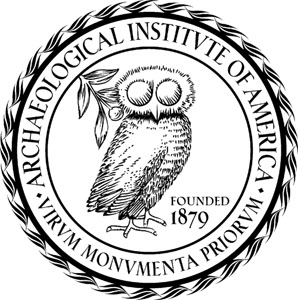January 4, 2012
by Peter Herdrich, CEO

January 5th marked the beginning of the Academic Program of the 113th Annual Meeting of the AIA, where our professional members reported on their work and shared the latest research with their fellow archaeologists. You might wonder how the program comes about. It wouldn’t happen if it weren’t for a lot of hard work by the Program for the Annual Meeting Committee. AIA CEO Peter Herdrich got to see the process first hand.
In a conference room in the Hilton Hotel on East Wacker Drive in Chicago, Michael Galaty of Millsaps College called the proceedings of the Program for the Annual Meeting Committee (PAMC) to order. Members of the Committee include Tom Carpenter, Ohio University; Cathy Keesling, Georgetown University; Lynne Lancaster, Ohio University; Sue Langdon, University of Missouri; Joanne Murphy, University of North Carolina at Greensboro; Jim Newhard, College of Charleston; William Parkinson, The Field Museum; Ellen Perry, Holy Cross; Archer St. Clair Harvey, Rutgers University; Robert Tykot, University of South Florida, and Greg Warden, Southern Methodist University. The task before the assembled members on this day was to make final choices on which paper submissions will make the grade and be selected for the AIA 2012 Annual Meeting in Philadelphia.
Michael explained how papers are accepted. Hundreds of abstracts were submitted to the PAMC for consideration. Each was read by a subcommittee of members who have a specific background in the academic area the paper proposes to cover. The subcommittees include topics of specific interest to AIA scholars, including World Prehistory, Iron Age Europe, Bronze Age and Early Iron Age Aegean and Greece, Archaic Greece, Classical Greece, Hellenistic Greece, Pre-Roman Italy, Roman Late Antiquity, Archaeological Methodology, Epigraphy, and New World, among others. The authors are unidentified, though if a reader can guess who submitted the abstract, he or she recuses him- or herself.
If a majority of the subcommittee accepts, the paper is in. If the majority votes no, the paper is out. On this day, the subcommittees had already dealt with the list of papers that got either all thumbs up or all thumbs down. Those are the easy ones. These papers aren’t quite as clear cut and each gets hearing before the entire Committee before a final decision is made. As the Committee considers the papers, opinions are strongly held whether pro or con, as a couple of comments show.
Over the course of the day, the PAMC made their judgments. What is most impressive is that they did this with sustained concentration and with the highest standards. What also becomes clear is that there was method to this, and the papers that get the thumbs up have some common characteristics.
By the end of the process, papers were accepted, along with eight colloquia, and four workshops. The papers were then grouped into sessions, 67 in total, and those sessions became the building blocks of the Annual Meeting.
And finally, a note about anonymity. A paper only identified as number 10560 was up for discussion. It had its supporters and one person who originally had a question was convinced that that it would make a proper addition to the Annual Meeting. Committee Chair Michael Galaty said, “Ok, then. We’re in agreement. Number 10560 is in.” At which Greg Warden, who had been quietly gazing at his notes, looked up and said simply, “Thank you.”